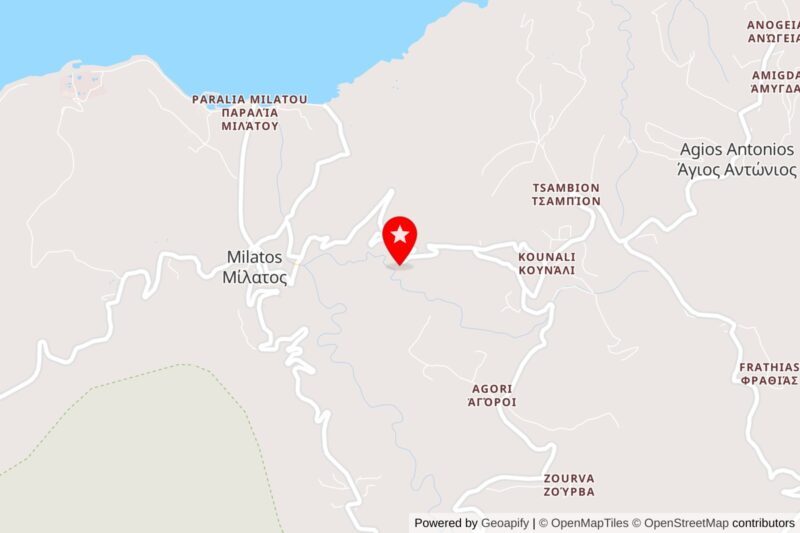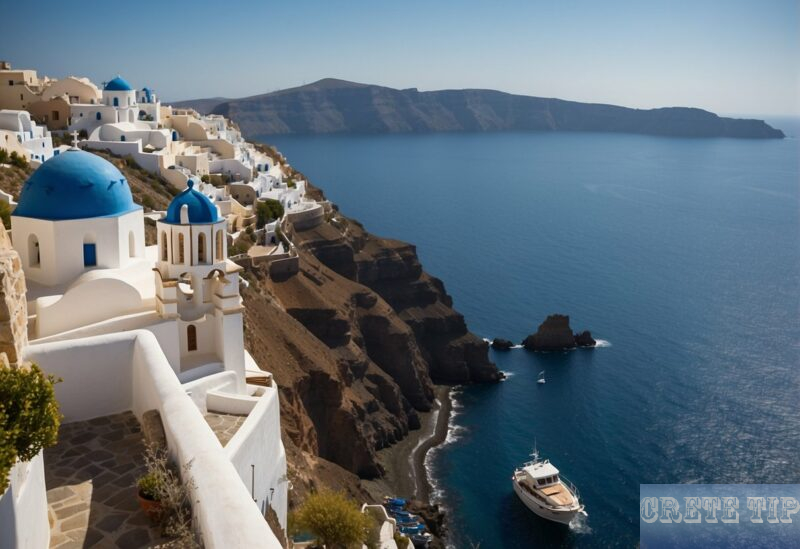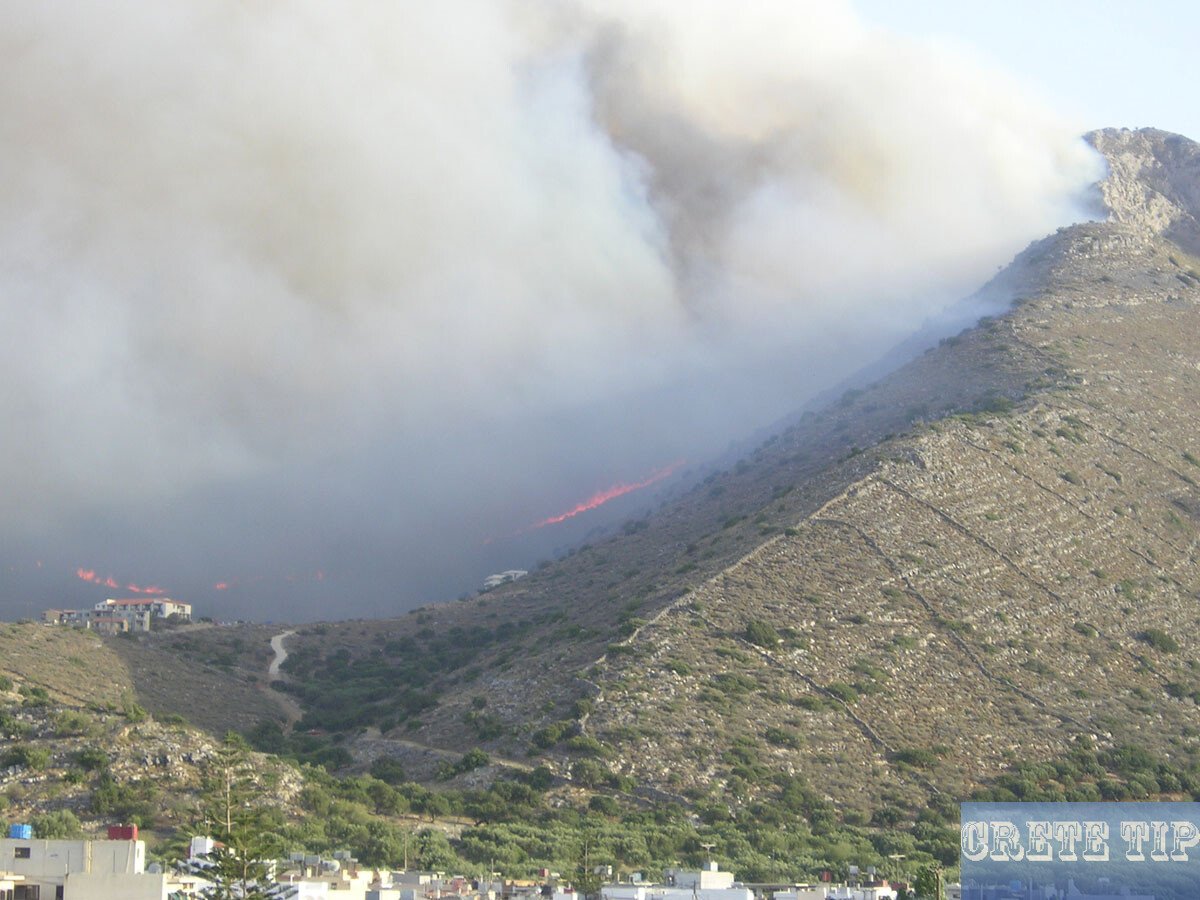Milatos with its famous cave and the neighbouring picturesque fishing village of Sisi to the east of Malia, which already belong to the prefecture of Lasithi.
From Sisi in the west to Plaka in the east, there are some well-hidden localities to discover here.
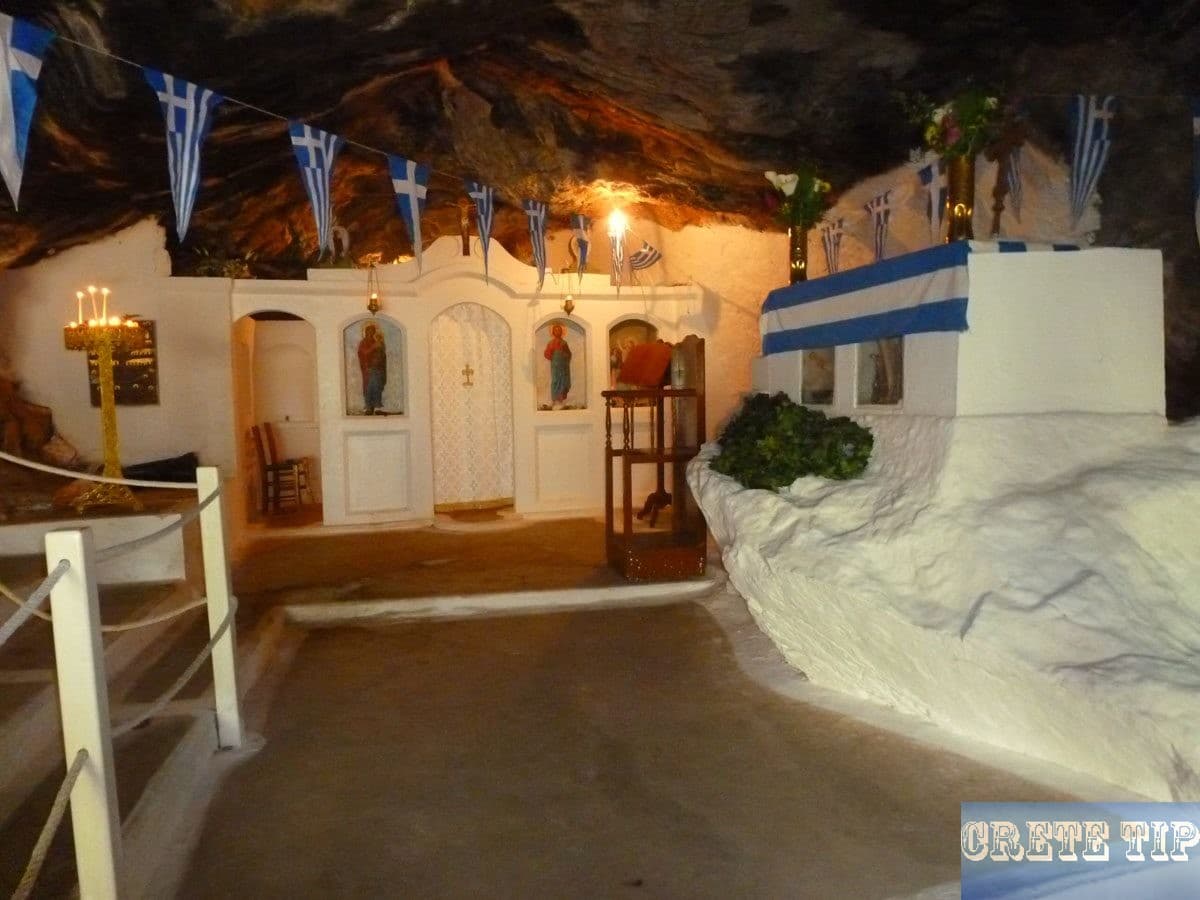
Milatos (Rapas) Cave
Milatos Cave, also known as Rapas Cave, is located near the village of Milatos on the Greek island of Crete. The cave has historical significance due to its use as a shelter by local residents during times of conflict.
The cave is situated about 3 km east of Milatos village, approximately 45 km east of Heraklion, Crete’s capital city.
During the Ottoman occupation of Crete, the cave served as a refuge for local residents fleeing persecution. In 1823, a tragic massacre took place when Turkish troops discovered the hideout and killed many of the people sheltering inside.
The cave was again used as a shelter by locals during the German occupation of Crete in World War II.
Milatos Cave was formed naturally through the dissolution of limestone rock by groundwater, creating a large chamber with impressive stalactites and stalagmites.
The cave is open to visitors and can be reached by a short walk from the nearby road. Visitors can explore the cave’s main chamber and learn about its history through informational signage.
The cave serves as a testament to the resilience of the Cretan people and the island’s turbulent history. It is an important historical and geological site that attracts visitors interested in Crete’s past and natural wonders.
Milatos
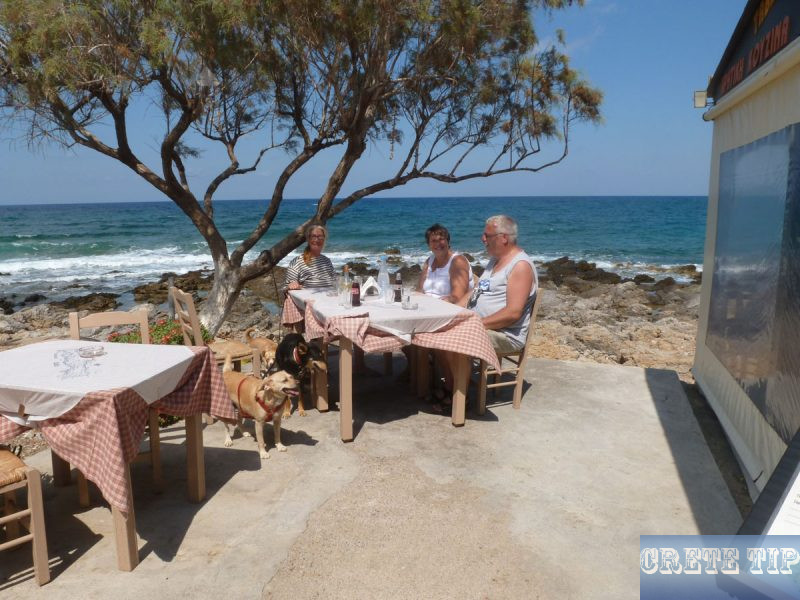
Milatos is a small coastal village located on the north coast of Crete, the largest Greek island.
Location: It is situated in the Lasithi regional unit, about 35 kilometers east of Heraklion, the capital of Crete.
History: The area has been inhabited since ancient times, with evidence of Minoan settlements nearby.
Attractions:
– Milatos Cave: A historic site where locals sought refuge during the rebellions against the Ottomans in the 19th century.
– Beaches: The village has several small, peaceful beaches.
– Traditional architecture: The village features typical Cretan stone houses and narrow streets.
Economy: Primarily based on tourism, fishing, and agriculture.
Nearby sites:
– The ancient city of Lato is located not far from Milatos.
– The popular tourist resort of Sissi is a short distance to the west.
Local cuisine: Like much of Crete, Milatos is known for its fresh seafood and traditional Cretan dishes.
Activities: Visitors can enjoy swimming, snorkeling, hiking, and exploring the surrounding countryside.
Climate: Typical Mediterranean climate with hot, dry summers and mild winters.
Milatos offers a quieter, more authentic Cretan experience compared to some of the larger, more touristy areas on the island.
The village of Milatos is a modest settlement with a number of taverns right by the sea. Touristically not overcrowded and not overly developed, it offers only a rough pebble beach and is somewhat isolated from the highway to Aghios Nikolaos.
However, the place had an important past, because the ancient city of Milatos was mentioned by Homer, Pausanias and Strabo. In the Iliad of Homer it is mentioned as one of seven Cretan cities that sent troops to the Trojan War.
In mythology, which is probably close to the truth due to recent archaeological findings, Sarpedon from this Miltaos was defeated by his brother, King Minos, in the battle for the throne. He then sailed from here to Ionia in Asia Minor and founded the colony of Miletos, which became one of the largest and most prosperous cities there.
Ancient Milatos, however, was destroyed by its rival Lyttos in the third century BC. Today it lies to the east of the beach, but there is little to be seen of it. Milatos fell into oblivion and no longer existed in Roman times.
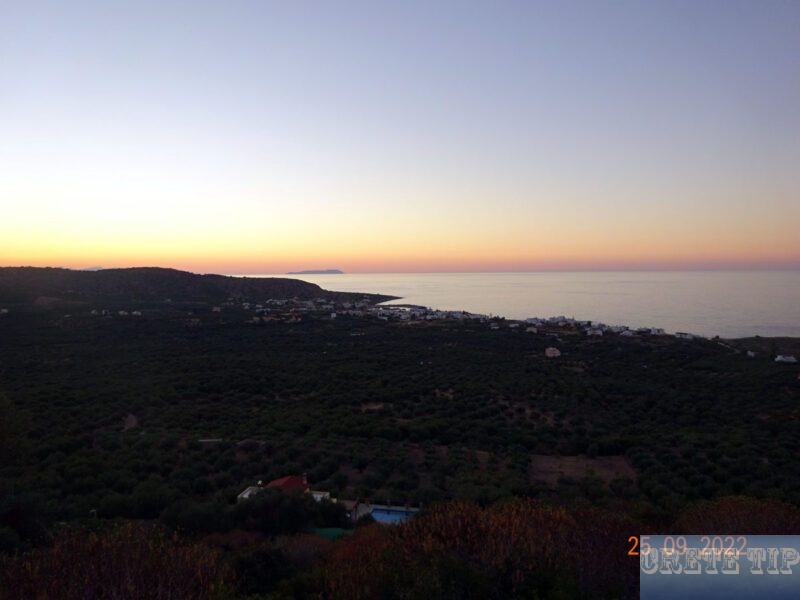
If you reach Milatos by car, you are almost in a dead end. Above the Milatos cave there are only dusty roads heading east into the Aghios Ioannis Peninsula, and you can’t reach Aghios Nikolaos or Elounda via them. There is only a halfway usable gravel road from here in a zigzag course directly to Neapoli.
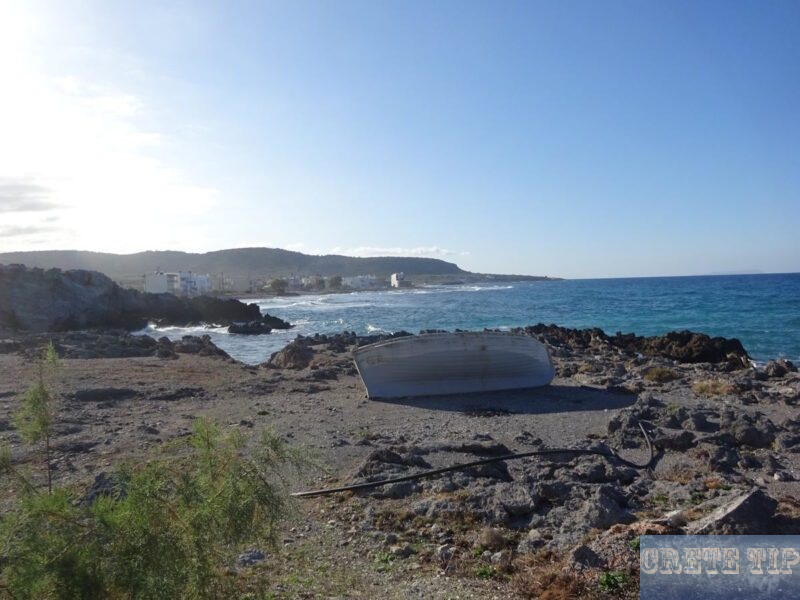
At the north-east end of the bay of Milatos there is a small chapel called Agios Konstantions, behind which lies the magnificent Andreas Cave.

To the west, however, you can reach the picturesque village of Sisi described below.
Drone video of Milatos Beach, location and entrance to Milatos Cave:
Sisi

Just a short distance west of Milatos (and east of Malia) is Sisi. The picturesque village lies at the western end of the triangular Aghios Ioannis Peninsula, but has more in common with the tourist centres of the Heraklion prefecture than with the rest of the Lasithi prefecture.
The village of Sisi (also spelled Sissi) is a picturesque fishing village located on the northeastern coast of Crete, Greece. This charming destination is situated about 43 km east of Heraklion and 25 km west of Agios Nikolaos.
Often described as Crete’s prettiest village, Sisi offers visitors a more authentic and serene alternative to the island’s larger tourist resorts. The village was built around an old fishing port nestled discreetly in a small bay.
What to Expect in Sisi:
The village features:
– Traditional houses with sun-bleached shutters
– Expansive olive groves in the surrounding area
– A beautiful waterfront
– A village beach
– Small shops and nice restaurants
– Some pubs and a mini golf facility

Approaching Sisi, you’ll take a winding, dusty road past traditional houses and olive groves that lead to this peaceful coastal haven.
If you’re looking for a quieter, more authentic Cretan experience with beautiful natural surroundings, Sisi offers a delightful alternative to the island’s busier tourist destinations.
Especially during the day in the tourist season, the place can be crowded with day visitors from the area of Hersonisos and Malia. From the sandy beach of Potamos (formerly Tropical Beach) and the Palace of Malia, the village can also be easily reached on foot along the coast and excursion boats also moor in its small harbour.
The fantastically pretty little harbour is the main attraction of Sisi, around which numerous cafés, bars and restaurants bustle. Towards the east, in the direction of Milatos, there are a few more attractive beach bays. The best of these, however, has been taken over by the Kalimeria Kriti Hotel, but you can still reach it from the equally attractive Avalki beach by following a path around the rocks.
The Milatos Cave
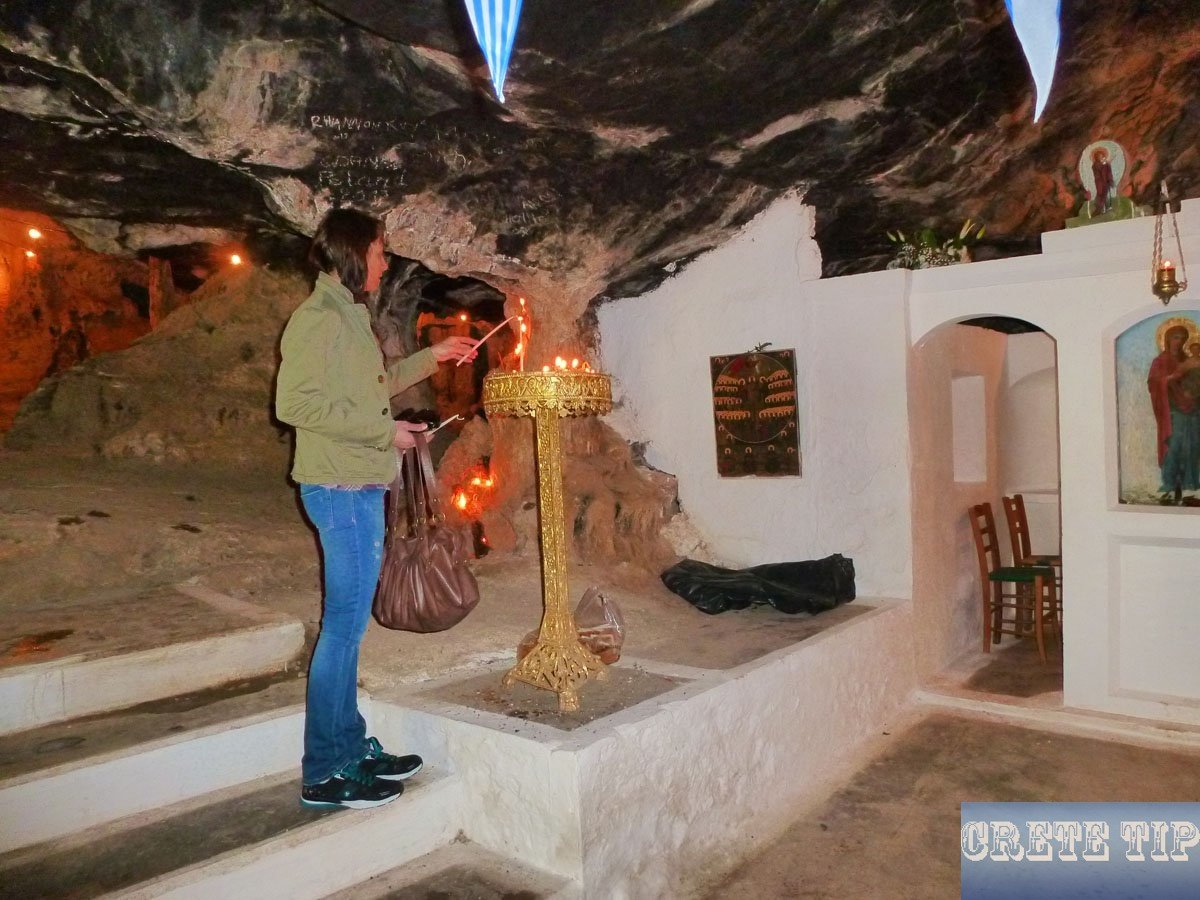
During the Greek Revolution, in February 1823, 2,500 women and children from the surrounding villages, along with 150 armed men, in order to avoid the army of Hashan Pasha who had his camp at Neapoli, came to the cave to be saved. He sent his son-in-law Mohamed Ali Hushein Bei with 5,000 soldiers to capture them alive.
The siege lasted for 22 days. The stink of the dead bodies was added to the artillery fire, the hunger and the thirst of the besieged. They could no longer bear it, and they decided their heroic sally.
Hushein forgot his vows. The Pasha gave orders to isolate the elderly, and they were led to a place where his cavalry trampled everybody to death. The babies were slashed and the younger women and children sold into slavery. The men were executed immediately or later at the Fortress of Spinalonga, the priests burned on pyres.
The babies were slaughtered and the mothers were sold as slaves. That was the end of the drama of the cave of Milatos.
In 1937 a small church, dedicated to Saint Thomas, was built in the cave, and it has also got a monument with some bones of the victims, which were found there.
Around 27 April every year, celebrations are held to commemorate the dead of 1823.
Visit to Milatos Cave

The Milatos Cave is a series of caverns rather than a single cave and a pilgrimage site for Cretans. It seems to extend infinitely backwards, and with a suitable torch it is possible to reach what may be distant parts.
Some remains of victims of the massacre, found later, were laid out in a coffin-like sarcophagus next to the small chapel.

Tip: To visit the Milatos Cave outside of peak season, the entrainment of a torch is recommended, since the electric generator to produce electricity usually is not running during this period.
Video of the drone flight in the Milatos Gorge:
Milatos is a picturesque area on the north coast of Crete, known for its natural beauty and historical significance. In addition to the Milatos Gorge, the region offers several other gorges for hiking and exploring.
In the Milatos Gorge, about halfway up, lies the Milatos Cave, which is 73 metres long and 63 metres wide and has a total area of around 2,100 square metres, making it one of the most remarkable attractions in the area. The cave is of historical importance and can be visited, although a torch is required to explore it.
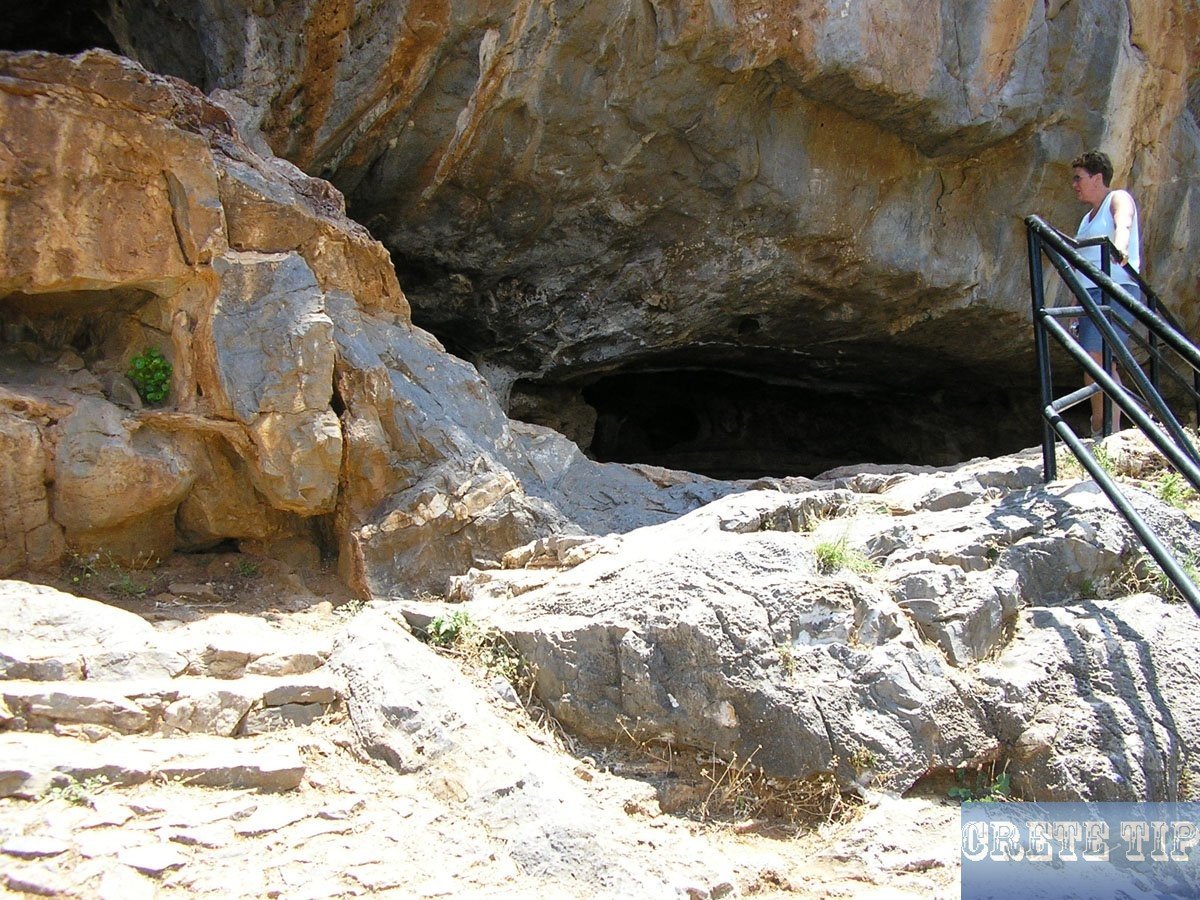

Directions to Milatos Cave
Rating: 4.5 (1536 reviews)
Location: Path to Milatos Cave, Κοινότητα Βραχασίου 724 00
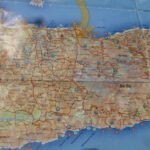
Click here: Directions Milatos Cave.

